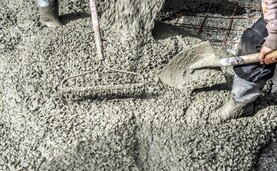We took a major step in our planned move towards robotic milking this month. We just got approval via TAMS and the final drawings are being prepared.
Our journey in deciding to go robotic milking hasn’t been a short one. Originally, I would have been quite anti-robot, as interacting with the cows is one of my preferred jobs compared with machinery work.
However, robots started to interest me when on a tour of a robotic farm, where I saw the level of information the machine collected on each individual cow.
Several years of research followed, where I put the most common concerns to farmers who’d already made the jump.
Each time I did, I got the same answers, that these concerns were either overblown or manageable.
Major step
It’s a major step for our farm and a significant investment even with the grant support. I would compare it to the move my father made in 1998 from a four-unit byre to a 10-unit herringbone.
At that time, he relocated milking facilities, along with cubicles and calving shed, from one side of the milking block to a greenfield site.
At least this time building work will be kept to a minimum, as the robot will be going in between two existing sheds.
In both cases, these changes carry their own risk, like any significant investment.
AI season
We came to the end of our dairy AI season in June. We used Limousin AI and high-terminal Angus on a few poorer milk solid cows, leaving 38 served with sexed; 11 heifers and 27 cows. This was followed by three weeks beef AI for all repeats and first cycling.
Our Angus stock bull ran with the heifers for these three weeks and then returned to the milking herd.
We’d assumed a 47% conception for sexed AI, which is what we have experienced in past years, meaning 17 to 18 dairy calves, so likely 15 heifers all born in the first weeks of February.
We’ve just scanned the cows here and were pleasantly surprised to find we have 22 in-calf to sexed - nine Holstein, nine Jersey and four Norwegians.
There’ll also be eight Limousins joining them and one Wagyu for good measure.
Submission rates
Submission rate has been something we’ve focused on in recent years, but it’s an area I think we need greater improvement.
Roughly 15% of cows over 40 days had no recorded cycle at the end of dairy AI.
I’m shy on using interventions unless necessary, as I feel it gives a false image of fertility in the herd. I would rather naturally remove less-fertile cow bloodlines by breeding them to beef after the dairy AI is complete.
I make an exception to my no intervention rule for dairy AI where a cow has a history of good fertility, but a clear reason for non-cycling, for instance retained cleanings or difficult calving due to calf presentation.
We scanned all non-cycling cows in early June and any treatments recommended were used.
Due to the spring rainfall we get here and although we start calving with heifers on 1 February, we prefer to have the majority of cows calving between 15 February and 15 March.
Our aim is still 80% in the first six weeks. However, the focus is getting the heifer calves in early February, giving them the best chance to be set up right for life before the majority of calves, and therefore work, arrive.






 This is a subscriber-only article
This is a subscriber-only article










SHARING OPTIONS: